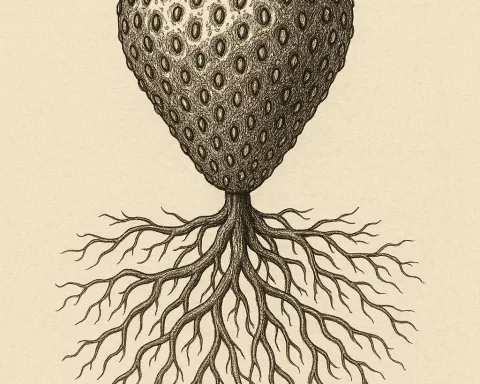The MTN-UJ Media Innovation Summit held on September 4, 2024, in Johannesburg aimed to explore the impact of the information age on the media sector. The keynote speaker, Hon. Kenny Morolong, emphasized the importance of data protection, independent sector regulation, and careful interaction with consumers in the telecommunications industry. He also recognized the emerging threat of ‘fake news‘ and announced the induction of a Print and Digital Media Transformation and Revitalisation Steering Committee to devise innovative strategies to rejuvenate print and digital media in South Africa.
Anticipating the Digital Horizon: Reflections from the MTN-UJ Media Innovation Summit. The MTN-UJ Media Innovation Summit was held on September 4, 2024, in Johannesburg. The summit aimed to explore how the information age has revolutionized the media sector and the processes of gathering, distributing, and consuming information. The Deputy Minister emphasized the importance of data protection, independent sector regulation in telecommunications, and careful interaction with consumers. He also recognized the emerging threat of ‘fake news’ and announced the induction of a Print and Digital Media Transformation and Revitalisation Steering Committee.
Establishing the Groundwork
Vibrant excitement hung in the air of the conference centre in Johannesburg, as the MTN-UJ Media Innovation Summit ceremoniously began on September 4, 2024. The Hon. Kenny Morolong, MP and Deputy Minister in The Presidency, illuminated the podium, delivering an impactful keynote speech that embodied the summit’s purpose and the larger direction of the media sector in this digital era.
Drawing from Walter Lipman’s book ‘Liberty and the News,’ Morolong quoted, “the health of society depends upon the quality of the information it receives.” This quote created a backdrop for an ensuing exploration of how the information age has revolutionized the media sector and the processes of gathering, distributing, and consuming information.
The Deputy Minister offered a reflection on the time before the emergence of the internet when mass newspapers, magazines and radio were the vehicles democratizing information. The proliferation of these mediums was powered by advertising which in turn led to a complex interplay of maintaining commercial viability and ensuring the dissemination of high-quality information.
Laying Out South Africa’s Digital Aspirations
Under the umbrella of South Africa’s vision for a digital future, the National Planning Commission had commissioned a review in 2018 of the National Development Plan’s (NDP’s) progress towards this ambition. Morolong outlined vital accomplishments such as the establishment of a broadband communication system that underpins an energetic, connected, and inclusive society based on information.
In Morolong’s view, the digital network ecosystem serves manifold purposes. It connects public governance with active citizenry, propels economic growth and competition, catalyzes job creation, enhances social unity, and fosters local, regional, and national integration. However, the media sector is a fiercely competitive and disputed territory, compelling media companies to maintain a delicate equilibrium to ensure business sustainability while upholding the integrity of journalism.
As Morolong continued his discussion, he turned to the ramifications of the Fourth Industrial Revolution (4IR) on South Africa’s digital vision. The Presidential 4IR Commission, established in 2022, had put forth numerous recommendations including cultivating human capacity in 4IR domains, forming the National Artificial Intelligence Institute, founding the Advanced Manufacturing Institute, creating a National Data Centre, and encouraging Small, Medium and Micro-sized Enterprises (SMMEs) to embrace 4IR technologies.
Emphasizing the Importance of Data Protection and Regulation
According to Morolong, data holds immeasurable significance in the information and knowledge era. He underscored the necessity for a robust open data policy that safeguards privacy and anonymity while also advocating for the public good.
He accentuated the importance of independent sector regulation in telecommunications to guarantee market competitiveness and devise strategies to bridge the digital divide for marginalized populations. He further emphasized South Africa’s active engagement in the G20 and OECD international taxation reform negotiations to ensure equitable taxation for global platforms, thereby strengthening the tax base for social protection and social investment.
Diving into the implications of rapid transformations in the advertising and media landscape triggered by technological advancements, Morolong addressed how these changes have redefined the way we engage with media, the platforms we interact with, and the visuals and messages we encounter. He urged careful interaction with consumers, stressing the need to abide by privacy policies and acknowledging the communications industry’s responsibilities.
Addressing Challenges and Opportunities in the Media Landscape
During these significant alterations, Morolong recognized the emerging threat of ‘fake news,’ exploitative content, and unscrupulous content creators, which can erode public trust in the media. He posed a challenge to the summit participants to ponder on how media can preserve business viability without sacrificing news quality.
Bringing his keynote address to a close, Morolong announced the induction of a Print and Digital Media Transformation and Revitalisation Steering Committee with the aim of devising innovative strategies to rejuvenate print and digital media in South Africa.
The MTN-UJ Media Innovation Summit, underscored by Morolong’s speech, was a critical platform for stimulating dialogue on the digital future of media. Navigating this digital age presents numerous challenges, but the opportunities are just as plentiful. The key to triumph lies in maintaining a fine balance between business sustainability and delivering high-quality information, thereby nurturing an informed and healthy society.
What was the purpose of the MTN-UJ Media Innovation Summit?
The purpose of the MTN-UJ Media Innovation Summit was to explore the impact of the information age on the media sector, including the processes of gathering, distributing, and consuming information.
Who was the keynote speaker at the summit?
The keynote speaker at the summit was Hon. Kenny Morolong, MP and Deputy Minister in The Presidency.
What were the key issues emphasized by the Deputy Minister during his speech?
The Deputy Minister emphasized the importance of data protection, independent sector regulation in telecommunications, and careful interaction with consumers. He also recognized the emerging threat of ‘fake news’ and announced the induction of a Print and Digital Media Transformation and Revitalisation Steering Committee.
What is South Africa’s vision for a digital future?
South Africa’s vision for a digital future includes the establishment of a broadband communication system that underpins an energetic, connected, and inclusive society based on information. The digital network ecosystem is intended to serve manifold purposes such as connecting public governance with active citizenry, propelling economic growth and competition, catalyzing job creation, enhancing social unity, and fostering local, regional, and national integration.
What were the recommendations put forth by the Presidential 4IR Commission?
The Presidential 4IR Commission put forth numerous recommendations including cultivating human capacity in 4IR domains, forming the National Artificial Intelligence Institute, founding the Advanced Manufacturing Institute, creating a National Data Centre, and encouraging Small, Medium and Micro-sized Enterprises (SMMEs) to embrace 4IR technologies.
What was the purpose of the Print and Digital Media Transformation and Revitalisation Steering Committee?
The purpose of the Print and Digital Media Transformation and Revitalisation Steering Committee is to devise innovative strategies to rejuvenate print and digital media in South Africa.











